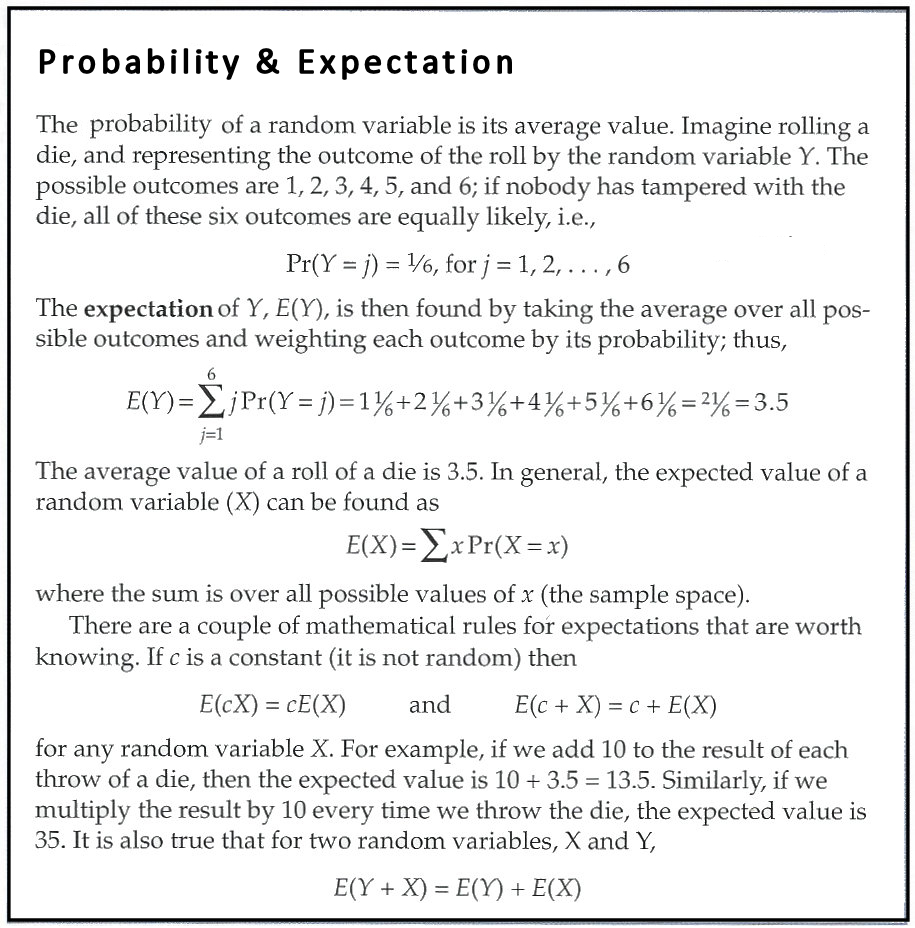
Expectation vs
Probability
When a single
die is rolled, the outcomes 1, 2, 3,
4, 5, & 6 all occur with equal probability.
For example, the probability of a 2 is Pr(Y =
2) = 1/6. Thus, over a long series of
rolls, each value will occur an equal number of times. The
calculation shows that the expectation of
this series is E(Y) = 3.5:
this is not a value that can be obtained on any
single role of the die. Likewise, when a single coin is
flipped, the outcomes H and T are equally probable, so Pr(Y = X)
= 1/2. Once
again, "half a head" is not an
observable outcome, but over the long run E(Y) = 0.5,
and we expect "50% Heads".
Probability and average are the same, if
and only if 'average' is limited to 'arithmetic
mean' as in the example. The expectation of a
variable might be the mode of its distribution,
and the mode will not equal the mean if the distribution
is skewed. The expectation of a complex function
such as the Poisson
Distribution is conditional on the occurence
estimated.
HOMEWORK: repeat the calculations of the probability
distribution and expectation for two dice.